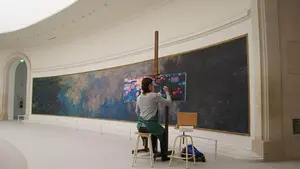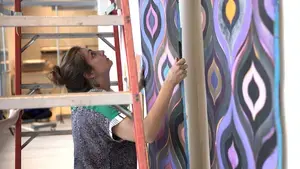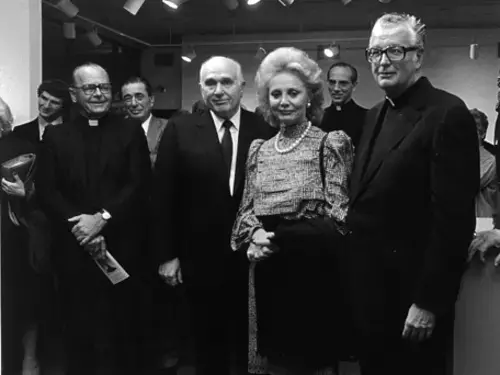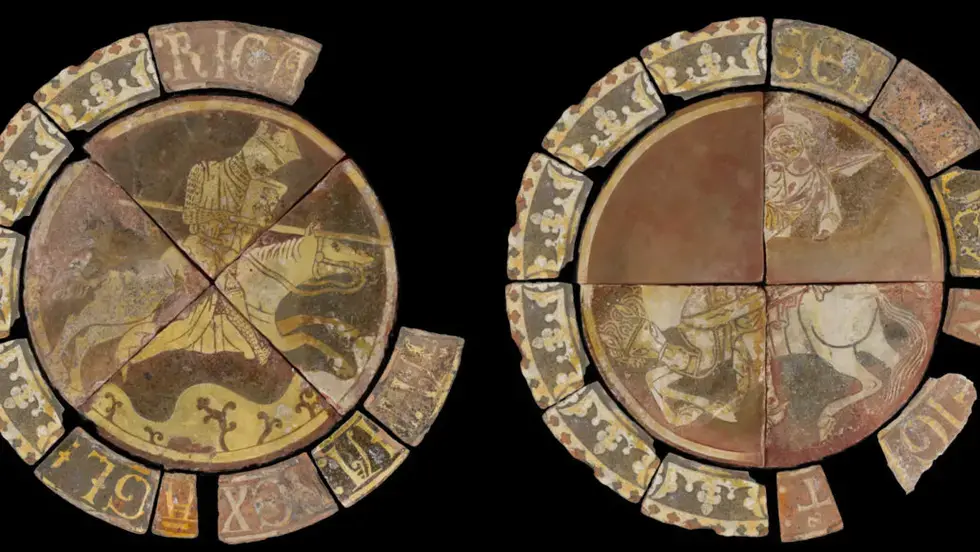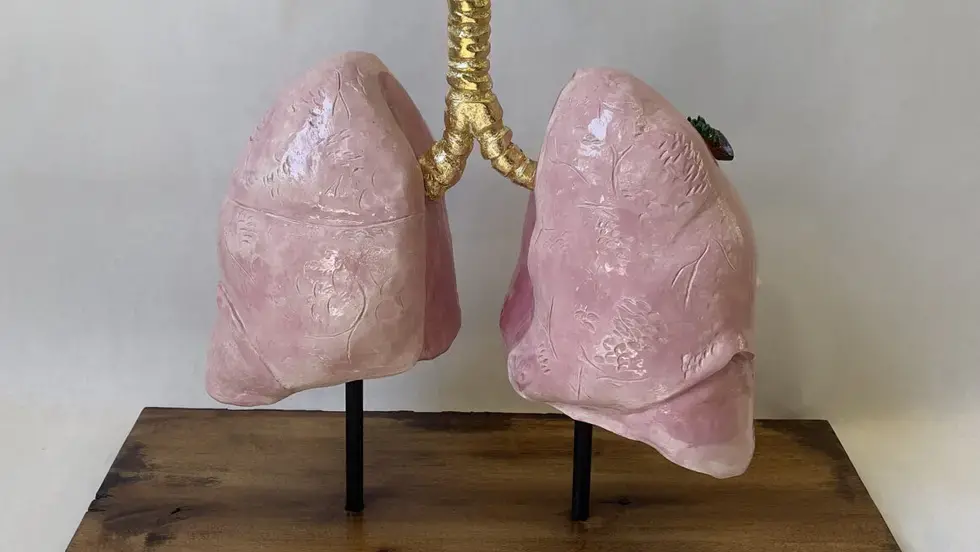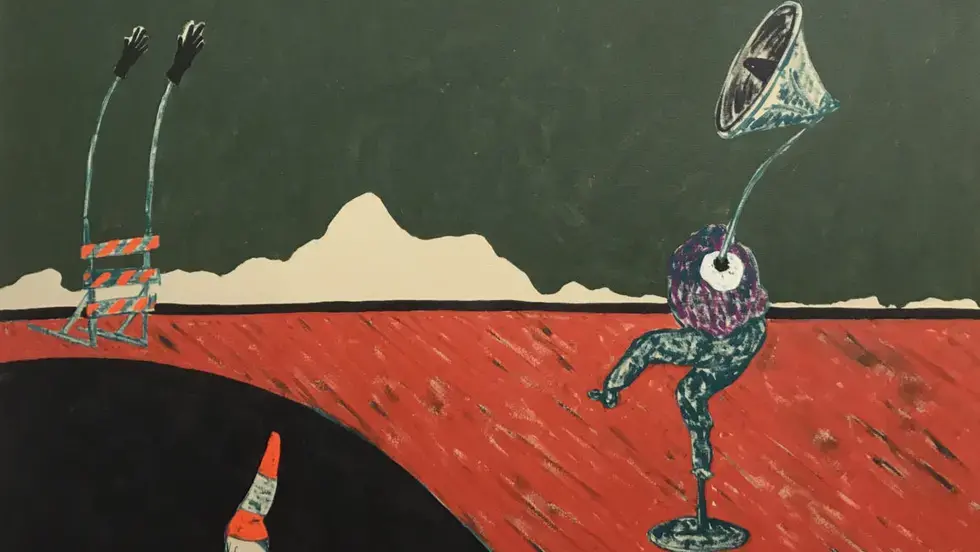
Cantor Art Gallery
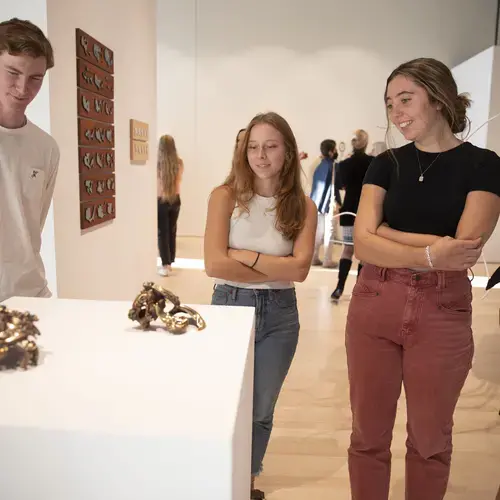
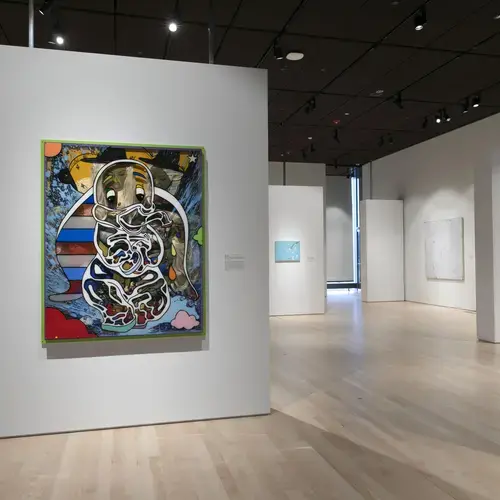
A world-class gallery intersecting with a liberal arts education.
The Iris and B. Gerald Cantor Art Gallery is more than just a space for exhibitions; it’s a place where art and academic life converge to inspire curiosity, reflection and discovery.
Our Mission
The mission of the Iris and B. Gerald Cantor Art Gallery is to promote and support the intellectual and cultural life of College of the Holy Cross. Through its exhibitions and acquisitions, both historical and contemporary, the gallery serves as a catalyst for the search for meaning and value in life and history, and as a venue to stimulate dialogue about questions related to the mission of the College. Exhibitions are selected to not only integrate with our broader liberal arts curriculum, but to educate our audiences on the fundamental intellectual, cultural, spiritual and aesthetic issues encountered through art.
Current Exhibitions
Plan Your Next Visit

Everything/Nothing: Works from the 2025 Senior Concentration Seminar
April 23-May 23, 2025
Featuring work by:
Jane Doyle | Peyton Ellinghaus | Aine Frisch | Jackson MacLeod | Serena McCarthy | Alex Raper | Marley Rehm | Isaac Trius
Events
Academic Conference Presentations by Senior Studio Majors |Wednesday, April 23 | 12:30 – 2:30 p.m.
Opening Reception | Thursday, April 24 | 5:30 – 7 p.m.
The Cantor Art Gallery and the Department of Visual Arts are honored to present Everything/Nothing, an exhibition of the work of studio art majors from the College of the Holy Cross. Throughout their senior year, the students have participated in a rigorous capstone seminar, honing their artistic practice through independent work and experimentation. Collaborating closely with studio faculty, they developed their unique voices and a cohesive body of work.
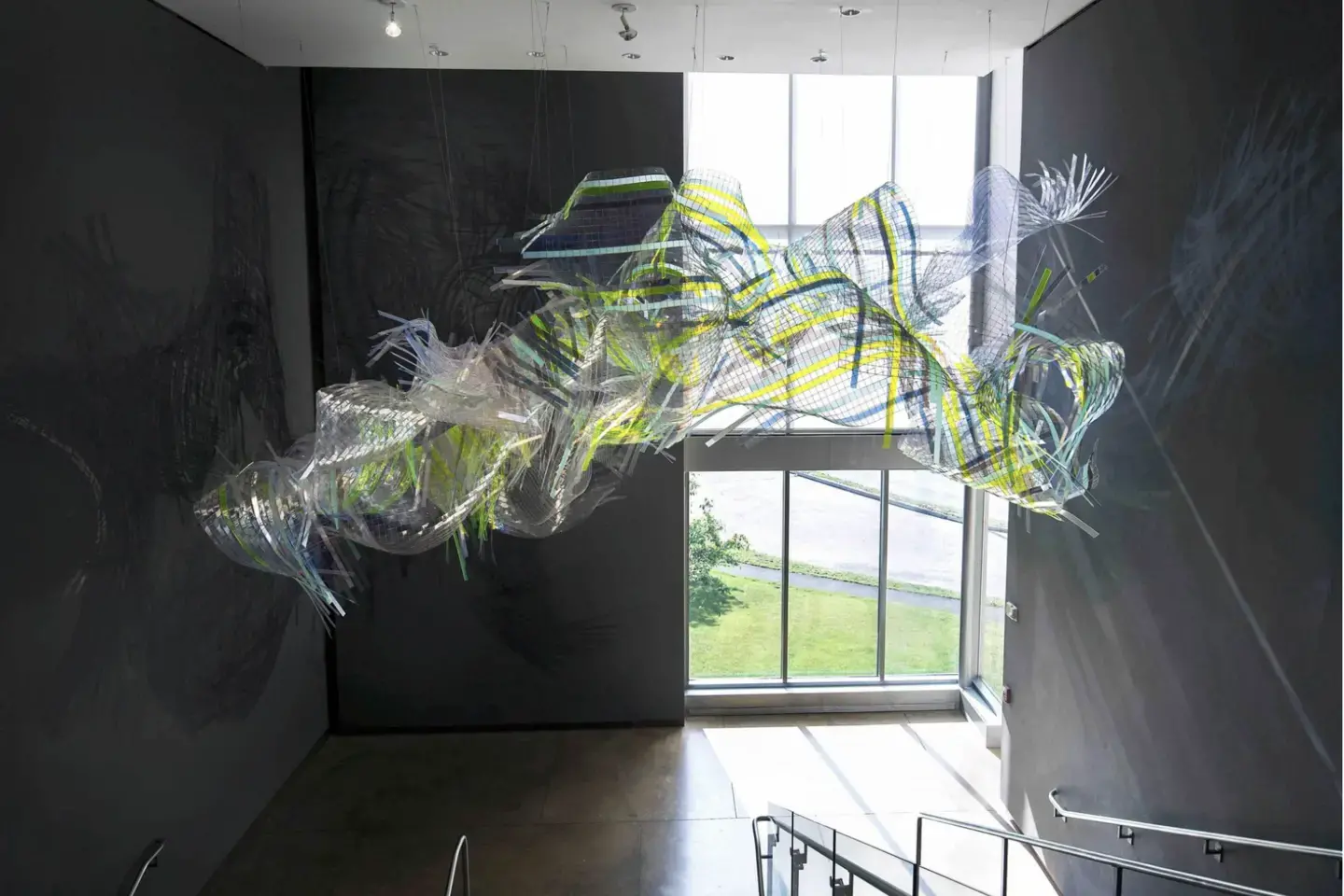
Soo Sunny Park, Boundary Conditions
As part of the Cantor Window Commission, Soo Sunny Park explores liminality and the transition between two seemingly opposing qualities: inside and outside, sculpture and drawing, objects and shadows. In the Cantor’s front window, Boundary Conditions emphasizes the space as housed interiorly but outward-facing, with abundant natural light.
Photo: Soo Sunny Park, Boundary Conditions, 2014, plexiglass, stainless steel, paint, daylight
Permanent Collection
The Iris and B. Cantor Art Gallery has more than 1,000 objects in its permanent collection. Through the generosity of alumni, artists and friends of the College, the gallery has become a resource to the campus community for permanent and rotating placements of art objects that enhance the landscaped grounds of the campus and interiors of many academic buildings. A rotating selection of the permanent collection is often on view in the Iris & B. Gerald Cantor Foundation Resource Gallery adjacent to the main gallery space.
The permanent collection represents a broad spectrum of art and historical periods and is enriched by the gift of a teaching collection comprised of historical Southeast Asian textiles from West Sumatra, and other islands of Indonesia, India and Laos.
A recent major gift of drawings from the archive of American abstract expressionist Robert Beauchamp (1923-1995) was given to the College by his widow Nadine Valenti Beauchamp, with an exhibition curated by Professor Maurice Géracht (English), Professor Leslie Schomp (Visual arts) and the director of the Cantor, Roger Hankins, which was on view from January 25 through March 28, 2018.
Additional notable works in the permanent collection include sculpture by Auguste Rodin, Enzo Plazzotta, Chaim Gross, Peter Grippe, Georg Kolbe, Robert Beauchamp and Robert Wlerick; photographs by Marilyn Bridges, Paul Caponigro, William Garnett, Eliot Porter and Dorothy Norman; and paintings, prints and drawings by Michael Beatty, Robert Beauchamp, François Bonvin, Robert Goodnough, Terri Priest, Dorothea Rockburne, James Stroud and John Wilson.
Previous Exhibitions
At Holy Cross, art is woven into the fabric of student life. Exhibitions are carefully selected to complement our academic programs, sparking new perspectives and conversations that continue beyond the gallery walls.
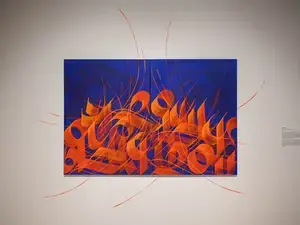
"Ritual and Devotion" is Sneha Shrestha's first major solo exhibition which explores the concepts of ritual and devotion beyond the sacred to include the secular.
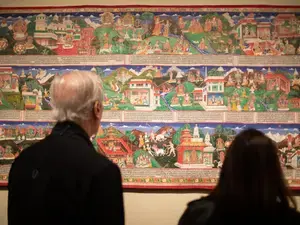
“Dharma and Punya: Buddhist Ritual Art of Nepal” displays nearly one hundred objects of Buddhist ritual art, many rarely seen in the West.

The work of graduating senior visual arts studio majors showcase their work in "Fine Art: Senior Concentration Seminar Exhibition" from April 26 - May 25, 2018.
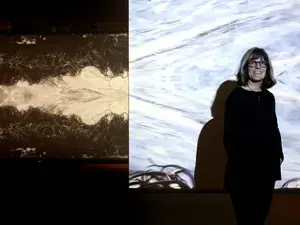
An immersive and visually complex exhibition, “Club Disminución” draws upon Horochowski’s versatility as an artist, as she mixes a range of media to create a vibrant installation environment.

From the exhibition “Gabrielle Thierry: The Musicality of the Water Lilies/La Musicalité des Nymphéas” that ran from Aug. 30 through Oct. 7, 2017. Thierry’s series of eight large-scale paintings were inspired by her rediscovery of the “Water Lilies” landscapes by Claude Monet on view at the the Musée de l’Orangerie in Paris.

“In Process: Contemporary Photographers Rethinking Their Medium From the Collection of Mark D. Nevins ‘86” presents the work of 22 contemporary photographers who are exploring the medium and technologies of photography in a diversity of ways.
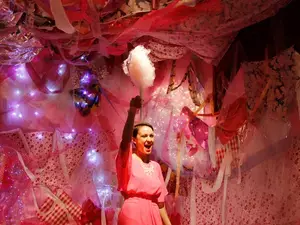
Graduating visual arts students who have participated in the year-long Senior Concentration Seminar present their work in “Amalgam” from April 28 - May 27, 2016.
Digital Archives
Our History
Location and Hours
We are located on the third floor of The Prior Performing Arts Center. Admission is free and open to the public.
The Cantor is closed for reinstallation and will reopen to the public on Wednesday, April 23.
Regular Hours
Monday: by appointment only
Tuesday: 10 a.m. - 5 p.m.
Wednesday: 10 a.m. - 5 p.m.
Thursday: 10 a.m. - 6 p.m.
Friday: 10 a.m. - 5 p.m.
Saturday: 12 p.m. - 5 p.m.
Sunday: closed
Iris and B. Gerald Cantor Art Gallery
Prior Performing Arts Center
1 College Street
Worcester, MA 01610
Subscribe to our Newsletter
Sign up to receive gallery news and events information.
